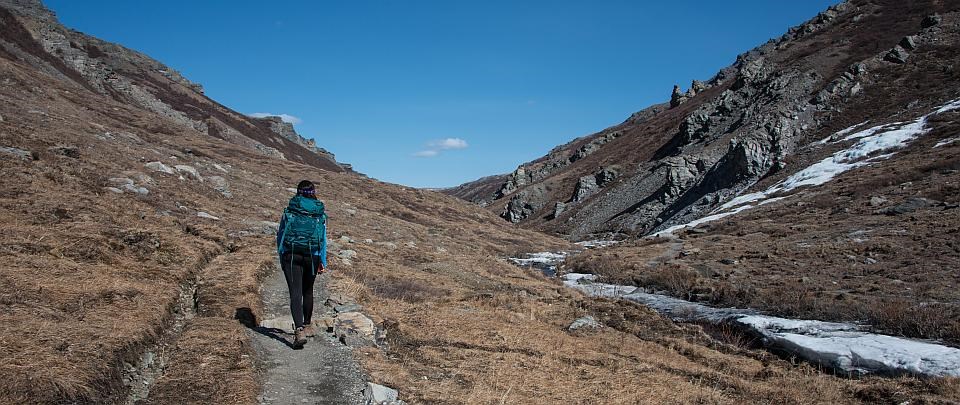
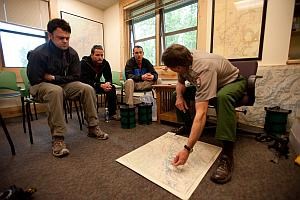
Plan Ahead and Prepare
- Know the area and what to expect: Browse the websites of the parks you plan to visit and contact park staff if you have questions.
- Travel in small groups, if possible.
- Select appropriate equipment: Weather and environmental conditions in Alaska can vary from hour to hour.
- Repackage food before leaving home: Many parks recommend, if not require bear resistant food containers (BRFC) for overnight backcountry users, and packing food into smaller containers will help in packing it into a BRFC! Check park websites for more information on food storage for campers.
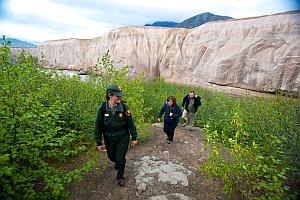
Travel and Camp on Durable Surfaces
- In popular areas, concentrate use; in remote or unimpacted areas, spread use.
- Hike on existing trails when possible. Use game trails if no maintained trail is available.
- When staying in a designated, established campsite, follow the guidelines of that site. Some of Alaska's national parks, such as Katmai National Park & Preserve, have no designated camping areas or maintained campsites. When camping in the backcountry, please try to camp on an area already impacted by other users. If those are not available, pick a campsite on durable surfaces -- grassy areas, gravels, rocks, sand. Try to choose a campsite 200 feet away from water. Avoid campsites that have signs of bear presence – tracks, scats, diggings, tree scrapings and alder patches. Areas with concentrated food sources such as schools of fish or large sedge meadows should be avoided.
- Use approved bear resistant food containers and store your food away from your campsite to keep curious bears out of your tenting area.
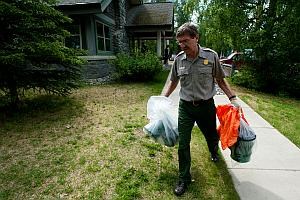
Dispose of Waste Properly
- When facilities are not available, use the "toilet in a bag" method: In heavily visited areas or areas near water, this is an efficient way to minimize the impact of human waste.
- In areas of tundra, avoid digging deep cat holes for human waste: Deep cat holes may disturb sensitive archeological resources. Instead, dig a shallow hole no more than a few inches deep or make a scrape with your heel and deposit human waste in it. Be sure to cover your waste with the disturbed soil from the hole.
- Use toilet paper sparingly and use a sealable bag to pack it and other hygiene products out.
- Wash dishes away from camp and pack out food particles: If you must use soap, use it sparingly.
- Deposit fish guts in deep, running water.
- Dispose of trash properly – pack it out! Burying trash only attracts bears and other animals. Burning it is usually not feasible and may create toxic fumes. Pack out your unused food and cook and eat away from your tent.
- Be extra clean in bear country! Do not store food in your tent.
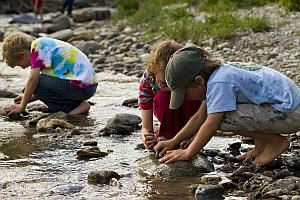
Leave What You Find
- Minimize site alterations: Fight the urge to make furniture out of logs, driftwood, and other natural features.
- Avoid damaging live trees and plants: Use tent stakes to tie down tents and shelters instead of tying off to trees.
- Avoid disturbing wildlife: Observe wildlife from a distance and give them the right of way. Avoid camping near denning sites, food caches and in alder or birch thickets.
- Leave natural objects and cultural artifacts where you find them! All of Alaska's parks and preserves have a long human history, and evidence of these cultures are found all across the landscape. Read each park's policy on finding natural and cultural objects during your visit.
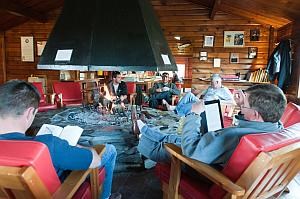
Minimize Campfire Impacts
- Make a fire only if necessary – use camp stoves to cook your food. In many places, finding enough dry wood for a fire is time consuming. Campfires should only be built where there is abundant and appropriate firewood. Care should be used in thick brush as bears may be walking through on a game trail.
- Use only dead and downed wood. Scatter ashes and any unburned wood from your campfire ring when you leave.
- Or better yet, go without a campfire!
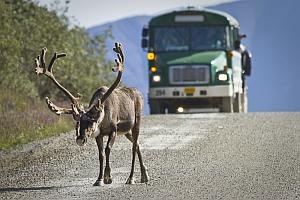
Respect Wildlife
- Observe wildlife from a distance. Do not follow or approach them.
- Never feed animals. Feeding wildlife damages their health, alters natural behaviors, and exposes them to predators and other dangers.
- Protect wildlife and your food by storing rations and trash securely.
- Control pets at all times, or leave them at home.
- Avoid wildlife during sensitive times: mating, nesting, raising young, or winter.
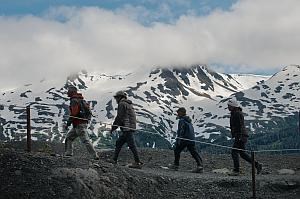
Be Considerate of Others
- Respect other visitors and protect the quality of their experience.
- Be courteous. Yield to other users on the trail.
- Step to the downhill side of the trail when encountering pack stock.
- Take breaks and camp away from trails and other visitors.
- Let nature's sounds prevail. Avoid loud voices and noises.
Last updated: July 14, 2017
